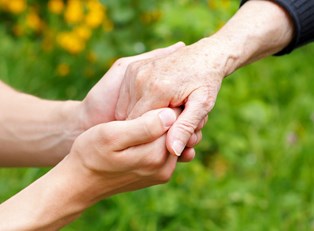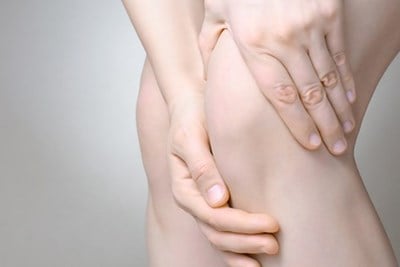Arthritis is actually a blanket term for over 100 different types of joint pain and disease. Arthritis is an extremely common issue.
Although arthritis is often thought of as something that happens to “old people,” it can happen to anyone. According to the Arthritis Foundation, it is a leading cause of disability, affecting more than 50 million adults and 300,000 children. Here’s a look at the most common types of arthritis, the symptoms they tend to share, and treatments appropriate for arthritis.
Types of Arthritis
The most common type of arthritis is osteoarthritis, also called degenerative arthritis. The joints essentially begin to literally “degenerate.” The cartilage in the joints, between bones, begins to wear away as a result of age, obesity, injuries, and even genetics. Eventually, the bones begin to rub against each other, making the joints weak and painful.
Different types of inflammatory arthritis, such as rheumatoid and psoriatic arthritis, are also common diseases. They are sometimes referred to as autoimmune arthritis, because they form as a result of a confused immune system that begins attacking the joints. Inflammation erupts in the area, and in addition to the joints beginning to break down, other parts of the body may suffer as well. The exact cause of inflammatory arthritides is still being investigated, but the Arthritis Foundation reports that genes seem to play a large role, as do smoking cigarettes, being chronically stressed, hormones, and certain infections.
Infections also have their own class of arthritides; infectious arthritis occurs when particular infections cause the joints to become inflamed and painful. They occur when the pathogen in question actually gets into the joint. Diseases ranging from salmonella to chlamydia to hepatitis C can cause infectious arthritis -- chronically, if treatment isn’t received quickly enough.
Gout is actually a metabolic arthritis. It is caused by abnormal uric acid levels in the body. Metabolic refers to the body’s inability to regulate these levels normally. It may be a result of too much uric acid, or a normal amount of uric acid the kidneys can’t get rid of. Urate crystals form in the joints, causing periods of intense joint pain. The big toe is often the first joint to be affected.
Symptoms of Arthritis
The defining symptom of all types of arthritis is joint inflammation. Even carpal tunnel syndrome, when a nerve in the wrist becomes pinched, is a type of arthritis, because it affects the wrist, which is, of course, a joint. The joints become swollen or inflamed, generally internally, although some severe cases may exhibit external swelling. The joints may become stiff. Ultimately arthritides restrict movement, limit range of motion, and inhibit even simple activities. Mild arthritis can make athletic pursuits difficult and painful, while severe arthritis can make simple tasks such as tying your shoes an impossibility.
Some types of arthritis may become worse over time. Other kinds may seem to get better for a little while, only to have symptoms return with a vengeance. The joints may actually undergo physical alternations. Everyday functions can become severely obstructed.
Treatments for Arthritis
Most types of arthritis have no “cure.” While it is possible to relieve symptoms in some cases, this is often through a defined regimen of self-care prescribed by a specialist. Mild cases may be helped simply through physical therapy, cold packs, and heating pads. Treating inflammatory arthritis involves attempting to get the disorder in question to go into remission, using immunosuppressants to push symptoms away for a time with the knowledge that they could return at any time.
Arthritis medication may involve topical treatments that provide a numbing sensation, oral medications to help with pain, steroid injections, or a number of other alternatives. Different types of therapies are often helpful. Hydrotherapy involves exercising in water, which allows you to reduce some of the force on joints, getting a better workout. In this way, it is possible to strengthen the muscles around the joints, thus lessening the joint’s load. Likewise, losing weight and making dietary changes can have an enormous impact. Ultimately, joint surgeries may be necessary to replace hips or knees. Every treatment plan is dependent upon the type of arthritis a patient has, the most impacted joints, and the patient’s individual goals.



